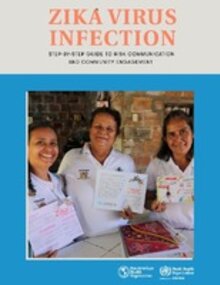This document provides Technical content on ZIKV, its manifestations, complications, modes of transmission, and prevention measures to be used in answering frequently asked questions and conveying messages in information and communication materials, community talks, press conferences, etc. Recommendations for the preparation of risk communication and action plans to respond to ZIKV.
This guide to activities and recommendations for managing risk communication on ZIKV is designed for spokespersons, health authorities and health workers, other sectors, and partners inside and outside the health sector to assist them in tailoring communication initiatives to the needs of each country and target audience. The elimination of mosquito breeding sites remains the most important strategy for the prevention and control of ZIKV (as well as dengue and chikungunya) infection. Therefore, communication plans for the response to ZIKV should include intersectoral action and community engagement to modify behaviors and encourage sustained practices to eliminate breeding sites and control the mosquito, as well as to inform and educate target audiences about the steps they can take to prevent ZIKV transmission.
The fourth meeting of the Emergency Committee under the International Health Regulations1 agreed that, “due to continuing geographic expansion and considerable gaps in understanding of the virus and its consequences, Zika virus infection and its associated congenital malformations and other related neurological disorders, ZIKV continues to be a Public Health Emergency of International Concern.
|

